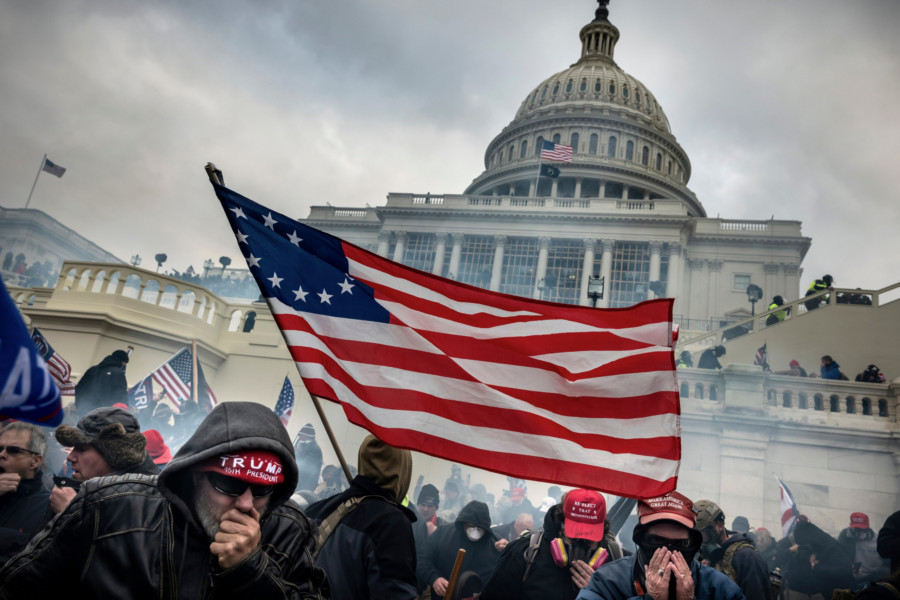
David Butow Chronicles the Trump Presidency in “Brink”
Freelance photojournalist David Butow crossed my radar in 2018 when his photo of then-Senator Jeff Flake went viral. The intensity of emotion combined with the near perfect placement of people in the frame made it an instant classic – so much so that Time magazine had him describe how he came to capture it. David subsequently reached out to me over Twitter, and we finally had a chance to sit down for some coffee a few weeks ago where he shared his recent book project.
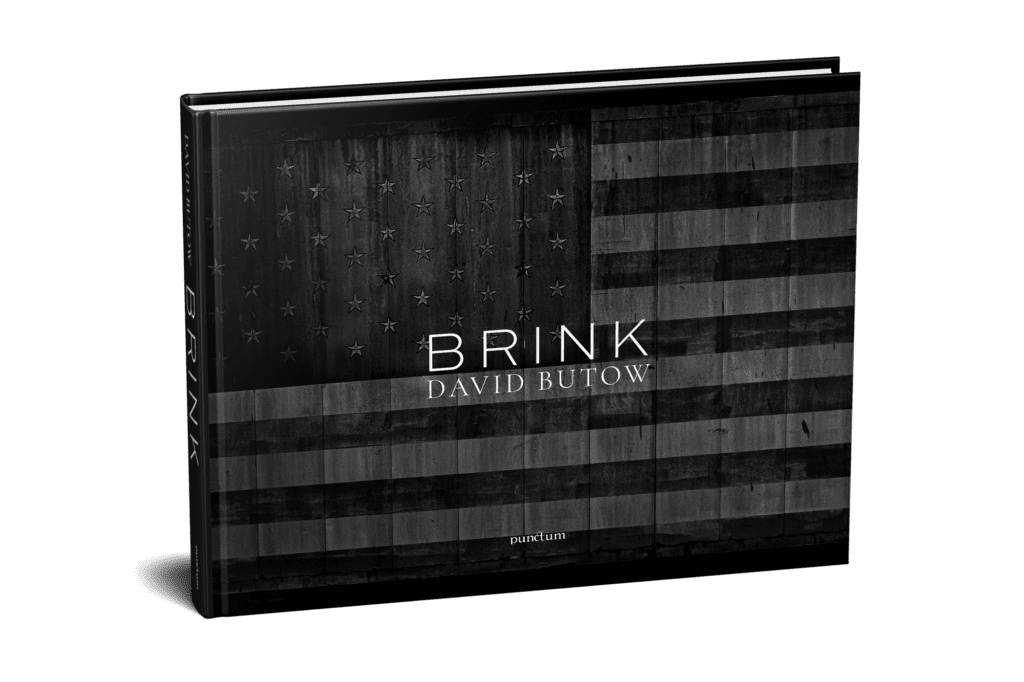
Stunned by the rapidly shifting politics and an ever-increasingly polarized electorate, Butow moved from California to Washington D.C. to chronicle the Trump presidency. The culmination of his work is a new book in three acts entitled “Brink.” Butow writes in the book’s end notes, “While I expected the incompetence, I underestimated the treachery.”
With his insider perspective and phenomenal eye, I was curious to find out more about how the book came to fruition. I reached out to him via e-mail.
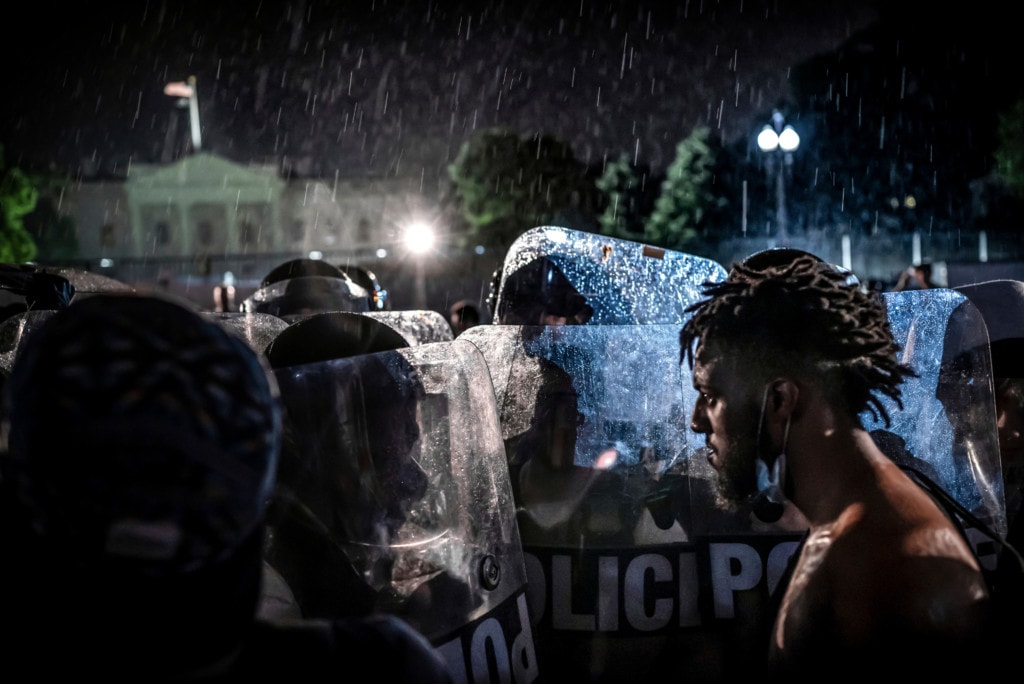
PhotoShelter: Was there anything in particular that precipitated your move to Washington, D.C. in 2017?
David: I thought [Hillary] Clinton was going to win, and before the election, I joked to nervous friends that if Trump won I’d move to D.C. “for a front row seat to the apocalypse.” After the election, I thought this might be the most tumultuous period in government in my lifetime. I was a political science major in college, and as a photojournalist, you’re often covering the results of public policy so it was a big interest but I’d never worked in Washington, in part because I’d always been based in California. Because I was curious about that experience anyway, I thought if there’s any time to try it, this was it.
You lived and breathed politics during the Trump presidency. Was there a specific tipping point when you thought your images needed to be compiled into book form instead of just daily news photos?
DB: In some ways, it was a slow build. I’d always photographed there with the idea of the pictures having a long shelf-life, thinking deliberately about how people in the future might see them in a historical context.
With the drip of events it was just hard to know how things would shake out, and how significant this period would be. Books are hard to do, so I wasn’t counting on it, but after January 6th, I thought I had to try as hard as possible to make it happen. The events were just too important not to try to make sense of them in long form.
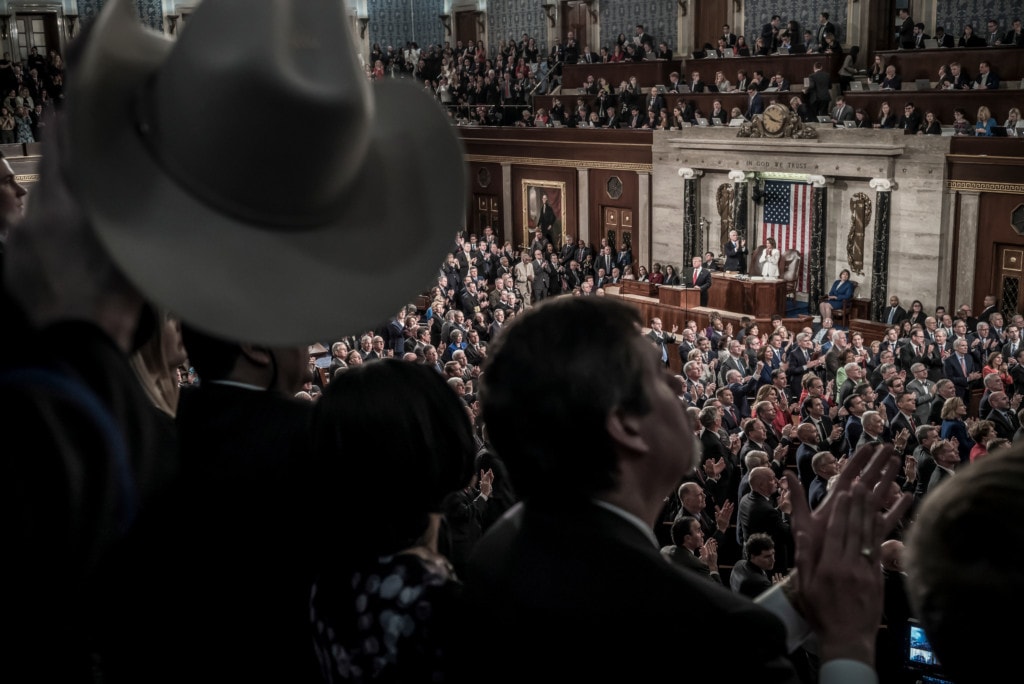
From what I gather, covering politics in D.C. can be a bit of Groundhog’s Day. Briefing rooms, Congressional spaces, etc. all suffer from a certain sameness. Did you try to find unique scenes in these places and/or seek other locales to really capture the zeitgeist?
DB: One of the reasons I wanted to cover these events was a curiosity of what happened outside of the frames of the television cameras. What was the peripheral activity and could you glean a bit of the zeitgeist in still photos in a way that was different from what all the excellent D.C.-based photographers were doing? That required sometimes de-prioritizing the newsier approach, and looking for something more unusual. That was quite fun, and now and then I got something unexpected. Those scenes almost always ended up being at or close to the usual photo spots because the pictures needed that context. And the locations did get repetitive but sometimes it was a matter of doing things like photo’ing outside in the hallway in addition to hearing room itself.
One of my favorite photos is your image of Sen. Jeff Flake during a Senate Judiciary Committee meeting regarding the nomination of now Supreme Court Justice Brett Kavanaugh. The events happened so quickly (based on the C-SPAN video), and I’m curious whether you knew you had a keeper when you took it.
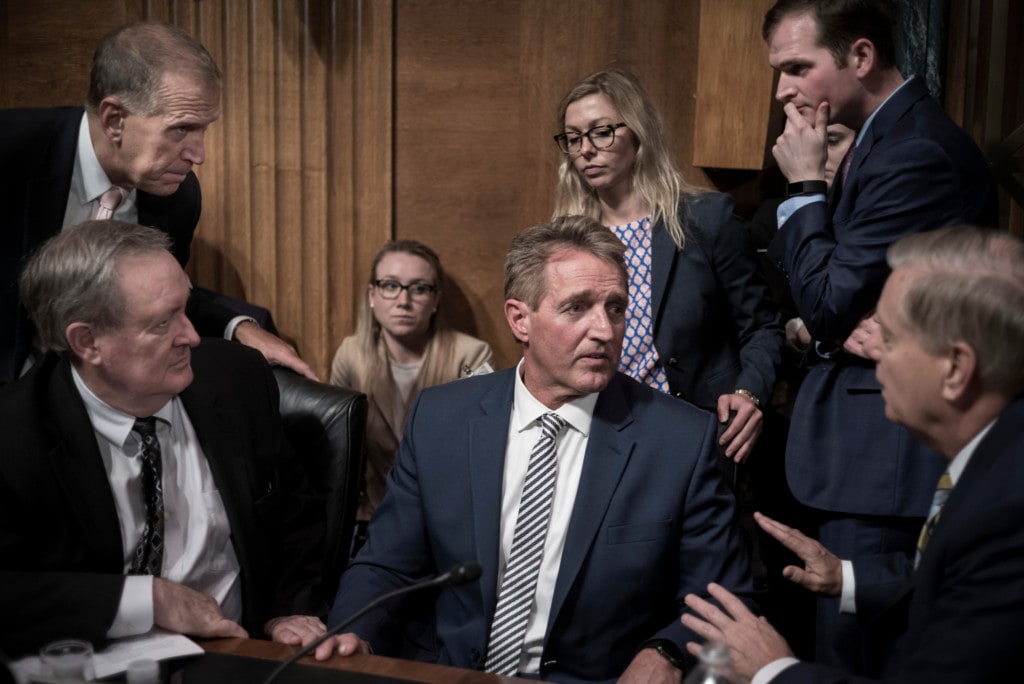
DB: That day was really interesting because it was one of the first times in a hearing I felt that I was actually covering news happening, not the presentation by the politicians in a theatrical sort of way. Even the republicans at that hearing did not know what Flake was going to do. He was the last senator to sit down, the scene was highly-charged. Flake was clearly the most important person in the room. I moved in front of his chair so I’d be right there when the hearing was over and I could stand up and start photographing. I was most curious about the reactions of his fellow republicans. You basically never see that kind of tension among members of the same party so I wanted to see their reaction to him when the hearing came to a close. I photo’d as fast as my little Leica M10 could go and thought I’d gotten something pretty good but I’d shot a lot of other photos that day and it wasn’t the only thing on my mind. About 30 minutes later I sent several pictures to the photo editor who’d assigned me, Andrew Katz at TIME, and he texted back that that was really good. I was happy and sort of relieved, because in these situations the goal is always to get a picture that rises to the level of the event itself, something that is hard to do, especially in Washington.
The January 6th riot is a real inflection point in American history. What was it like on the ground? Did you fear for your physical safety? How did you make sense of what to photograph in such chaos?
DB: I could go on at length about January 6th but I’ll try to keep it relatively brief. It was one of the most dramatic things I’ve ever seen, and one of the most terrible. I knew I was watching something very historic, and seeing the democratic process attacked that way was shocking and depressing, in large part because the attack was activated by the President of the United States. I was on the west steps of the Capitol in the mob most of the time and it was a long time before I made it inside. As a result, I had a limited understanding of everything that was happening. Yes, I feared for my safety in the same way I would covering other riots, but this was worse because the crowd was just packed on the steps of the Capitol and there were a lot of ways to get hurt, and the police were so unprepared. I couldn’t believe the ferocity of the mob. Several people tried to suss out if I was a friend or foe, but my strategy was to wave those questions off and disengage as quickly as possible and fortunately I didn’t have any problems with the crowd and never got hurt, unlike some of my colleagues who were assaulted. It was hard to make sense of it and take pictures that captured the scope, even just outside. It was violence at the literal doorstep of democracy so that’s what I tried to show.
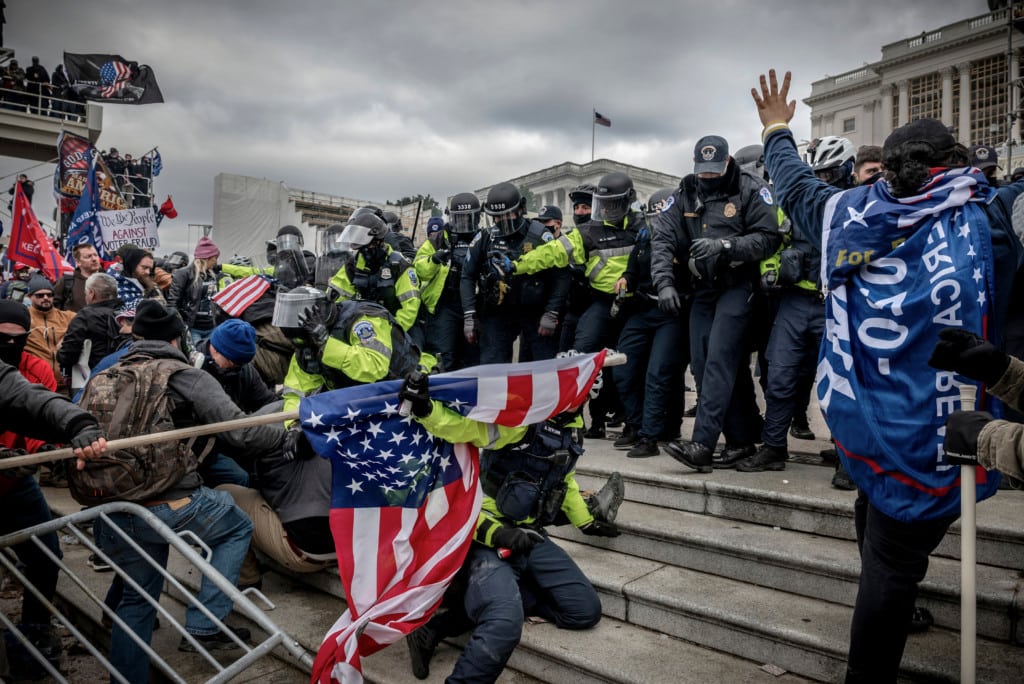
Can you explain your editing process for the book? Did you work with a photo editor? How many images did you start with, and what was the process for winnowing down to your final edit?
DB: In January this year I started to go through all of my favorite pictures from the last four years, which included stuff that I’d done before the election. I happened to be in touch with Jenn Poggi, a professor of photojournalism at RIT. She had been a photo editor at US News and World Report magazine when I was on contract there in the 90’s and 2000’s so we’d had a long and good working relationship. She took an immediate interest and helped me with the Herculean task of winnowing down close to a thousand pictures and trying to make sense of the whole thing. We did a lot of Zoom calls. Having a great set of eyes on something is so important because they can see, more objectively than you, certain patterns or relationships that you might not notice. When we had a basic structure I rang up another fantastic former US News photo editor, Olivier Picard, and over the next few months, the three of us made many many changes and did the fine-tuning. It was a wonderful process and although we never worked as a trio at the same time, it was totally collaborative and I think it was the perfect combo. There are 104 photos in the book.
I recently chatted with Jim Richardson, and he told me that contest-winning photos aren’t necessarily the best at telling a specific story. I’m looking at a photo you took of a couple in bed in a motel room in Benton Harbor, MI, and thinking that there is so much going on in the photo. It might not be a cover image, but there is so much symbolism, and it captures a sense of fear. Can you talk about the role of this type of image in a sequence?
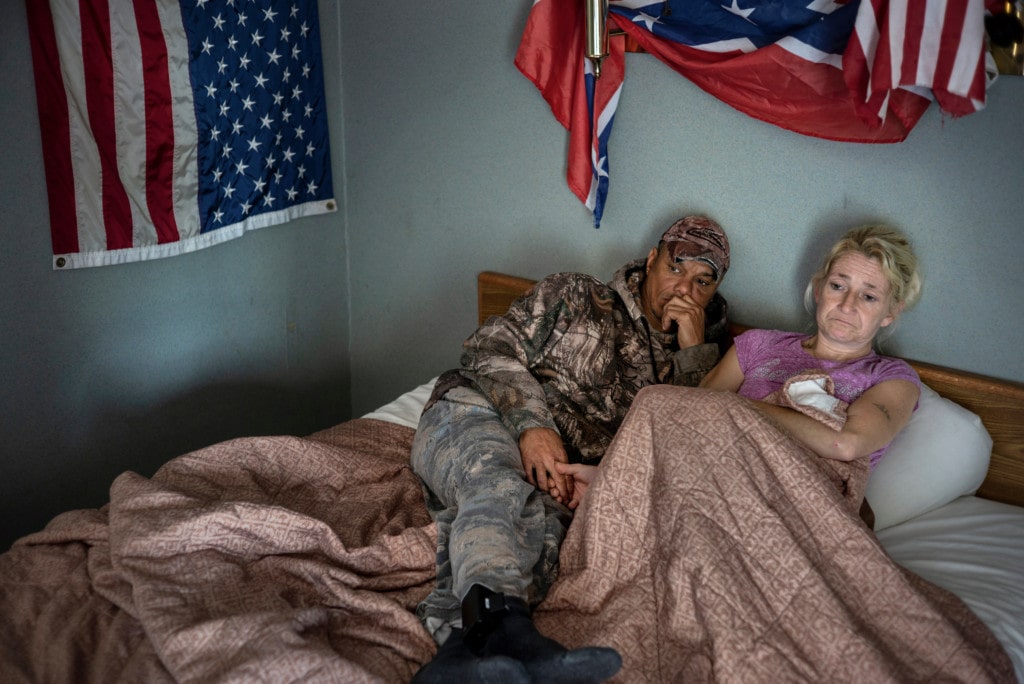
DB: Well he’s great so that’s obviously true! Jenn made an interesting comment early on in our editing, that the pictures in the book say a lot about culture, not just politics.
I’d gone out to the Midwest a few weeks before the election to go to campaign rallies but also to poke around and see if I could find pictures that had certain relevant feel and content, even if they weren’t overtly political. At that time I had no idea that the pictures would be in any book, let alone one about the Trump presidency. The motel that I came across in Benton Harbor was fascinating because it was kind of a melting pot of American economic despair. I met several people there who let me hang out with them in their rooms, photographing truly candidly. The people in that photo are a mixed race couple, and they are watching television after a daytime nap. The light is coming in from the window. There were things about them that so defied stereotypes, like the Confederate flag that’s hanging on the wall having been placed there by the African-American man. He told me the reason for this, and I don’t want to go into details of that conversation but he hangs it there along with the American flag without any sense of irony.
There’s something about their expression that viewers, including myself, end of doing a lot of projecting, which is fine, and it captures some sort of ambiguous moment and it’s one of my favorite pictures in the book. During the editing, Olivier made a point of focusing Act I on ordinary people, and I think that gives context to the political events that unfold in II and III. It sort of sets things up in slow build.
Did you work with a designer on the book?
The basic design is mine and fortunately, the publisher liked it. I didn’t want it to be too clever, or get in the way because these events are too important to be distracted by something overly-designed. My friend, artist and book designer David Brady, had some good suggestions as well. Rome-based Punctum Press’ designer Nicola Veccia Scavalli did the fine-tuning. The cover design, which I absolutely love, is totally his idea. It is a photo of mine of a flag on the side of a barn, converted to black and white.
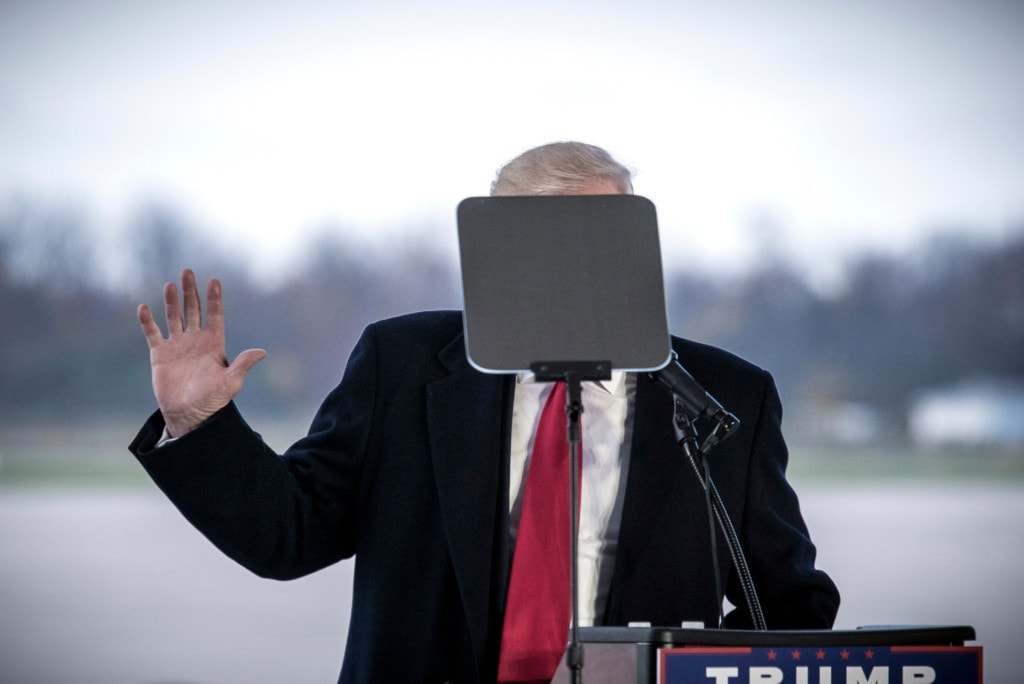
For many photographers, a book can be an expensive exercise in vanity. But your book seems to have a significant raison d’être in terms of documenting a tumultuous period of American politics and the ramifications on society and culture at large. What are you hoping that readers take away from it?
My raison d’être was to show the whole timeline with the single thread of my viewpoint and style, and put it together in a way that the viewer will have a very different experience than seeing pictures of this subject on a computer screen or on television. Also, I think a book gives more gravitas to the subject. So it’s both a contemporaneous account and one that’s designed to be interesting to people in the future. I think of myself more as a contemporary historian, if there could be such a thing. I have opinions of who the good guys and the bad guys are, but I didn’t want the book to be overtly “Us vs. Them.” Virtually everything you read these days takes that approach, we don’t need one more voice in a billion saying those things.. At first, I thought this period would be an aberration, but I’m now worried that it might be the beginning of very dark days in the United States.
What is the state of being a freelance editorial photographer in 2021? Has making a living gotten more difficult in the past few years? Or have you found a sweet spot?
It is difficult. I used to be able to make a living solely as a photojournalist, but now, unless you have a steady gig with a wire service or newspaper, you really have to think broadly about the types of work you’re willing to do. I think you have to spread out, do corporate work, maybe sell prints, and be open and imaginative, more proactive and entrepreneurial. I’ve kept the copyright to basically everything I’ve ever done so photo stock sales help when the assignment level dips.
